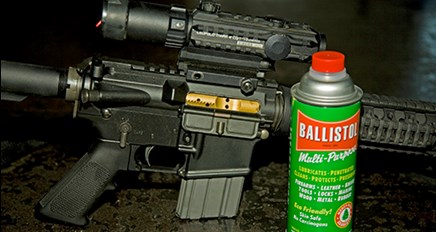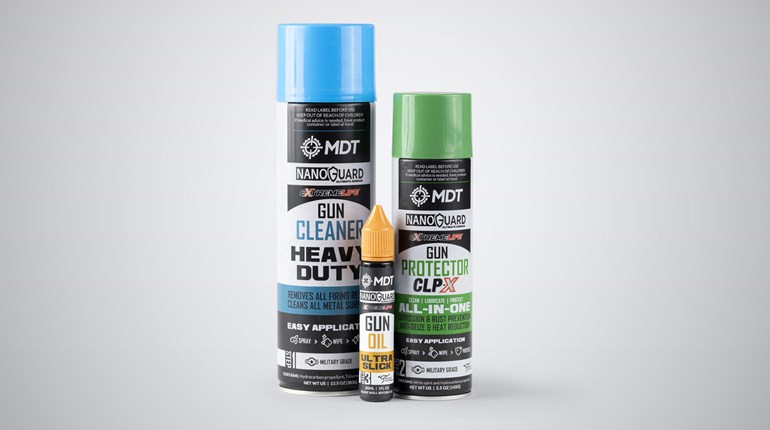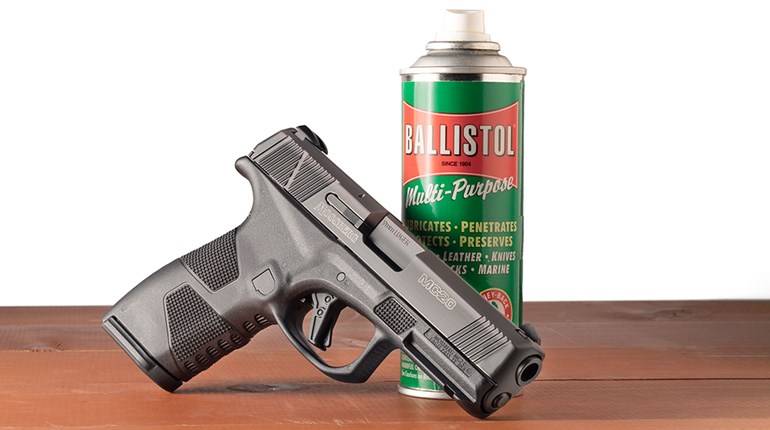
 If you wander down the gun-cleaning aisle of any decent gun store, you will see an incredible array of solvents and lubricants with which to keep your guns in their best shape. Each will claim to be better than the others, but the fact is fouling—the junk you are trying to rid your gun of—is pretty much fouling. There are basically four types of fouling: smokeless powder ash, black powder ash, lead (from cast or swaged bullets) and copper (from jacketed bullets). Ash—be it from black powder or smokeless powder—is pretty easy to remove. Commercial powder solvents take care of the smokeless powder ash pretty well, and most of them include some ammonia-based concoction to deal with mild copper fouling. Black powder fouling is best dealt with soap and hot water.
If you wander down the gun-cleaning aisle of any decent gun store, you will see an incredible array of solvents and lubricants with which to keep your guns in their best shape. Each will claim to be better than the others, but the fact is fouling—the junk you are trying to rid your gun of—is pretty much fouling. There are basically four types of fouling: smokeless powder ash, black powder ash, lead (from cast or swaged bullets) and copper (from jacketed bullets). Ash—be it from black powder or smokeless powder—is pretty easy to remove. Commercial powder solvents take care of the smokeless powder ash pretty well, and most of them include some ammonia-based concoction to deal with mild copper fouling. Black powder fouling is best dealt with soap and hot water.
Copper and lead fouling are proportionate to bullet speed. The faster you drive a bullet, the more of it will rub off and deposit in your barrel. Virtually all copper fouling solvents are ammonia based, and the strongest can be very irritating to your eyes, nose and skin. Lead fouling is normally dealt with direct scraping using brass screening, occasionally combined with a lubricating solvent designed to act as a wetting and lubricating agent.
In most parts of the country the final phase of gun cleaning involves covering the exposed metal parts with a lubricant that provides a barrier against rust, along with lubricating close-fitting moving parts. As long as there have been guns there have been people who tout their own secret recipe for gun lubricants—part alchemy and a healthy dose of marketing.
Today’s guns are often made from so-called stainless steel alloys. Anything that has iron in it is capable of rusting, but the addition of nickel (primarily) retards the tendency to corrode. These alloys will not rust in most environments, but if they are stored or used much around salt water they will oxidize to some extent. There are some modern metal finishes that are applied to carbon steel alloys that offer corrosion protection as well.
Gun lore has it that guns should be run as dry as possible. The reason for that notion dates back to the use of traditional petroleum-based lubricants that thicken and gel as temperatures get below freezing or they are left on the gun for an extended length of time. However today we have lubricants that maintain their viscosities over a wider range of temperatures. Modern guns are more closely fitted than they were even a couple of generations ago and therefore must be properly lubricated to maintain their reliability. We sometimes refer to this as “running them wet.”
Ballistol is a lubricant that I have been using for about 10 years. It wasn’t until very recently that I found out it isn’t one of these new whiz-bang concoctions. It actually dates back to the turn of the 20th century. The German Wehrmacht demanded a lubricant for its weapons that would not congeal in low temperatures. Further the Wehrmacht wanted the same substance to protect the wooden stocks and leather accoutrements of the firearms. Even more the substance should be useable for wounds, scrapes and scratches a soldier might encounter in the field.
Dr. Helmut Klever, a professor of chemistry at the Technical University of Karisruhe took on the challenge in 1904 and a year later developed Ballistol—the name developed by combining ballistic with the Latin word for oil, oleum. The product has been wildly successful in Europe as a light lubricant for everything from guns to motor vehicles to electrical components. It can be mixed with water to serve as a solvent for gun cleaning. Ballistol does not resinify or congeal with age. In 1985 a bottle of Ballistol was found in an attic where it had been for 60 years. It had not congealed or discolored, and subsequent analysis showed that it was as good as the day it left the plant.
Ballistol may not be the only good gun lubricant out there, but it certainly has been one of the most consistent performers for more than a century. As for me, it is the only gun oil I have used for nearly a decade—so I am fashionably late again.





































